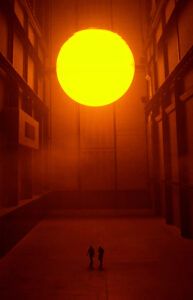
Design for a Changing Climate

In downtown El Paso, one feels a slight charge in the atmosphere—a quality mostly absent from its regional neighbors but palpable in places like Mexico City, where multiple cultures and histories overlap to create novel formulations of modernity. Straddling physical and political borders with Mexico and historical epochs ranging from the Spanish incursion to the Mexican Revolution to today, the area is fertile ground for unique cultural and architectural development.
Set between the formidable restoration of Trost and Trost’s Plaza Hotel and Snøhetta’s La Nube is Star Ceiling (El Paso), a stealthy addition to the El Paso Museum of Art by artist and native son Leo Villareal in collaboration with El Paso’s In*Situ Architecture.
In an effort that encompasses the creative reuse of existing urban fabric and an earnest approach to civic engagement, the work—a light sculpture composed of 14,580 individually controlled LEDs—serves as a setting for spectacle by night and respite from the southwestern sun by day. Zero-gravity loungers finished in wood planking invite the public to linger and engage with the hovering plane of light in an endless and nonrepeating stream of rhythm, pattern, and movement.
Situated over a pedestrian thoroughfare in front of the museum, the piece is also architectural, functioning as both shaded pergola and grand entrance. By recommissioning a linear series of seven concrete columns built by the City of El Paso in the mid-1990s, the installation found its structural anchors and scale, as well as its economy.
In*Situ Architecture, led by principal architect Edgar Lopez, AIA, analyzed the reinforced concrete columns and found them suitable to support the 20-foot cantilever that spans 140 feet of public sidewalk adjacent to the museum. Furr-outs finished with porcelain panels house the electrical conduits, controls, and downspouts that drain the low-slope roof system.
The base condition of each column is a repeated composition of a concrete planter-and-bench plinth on three sides and loungers wide enough for three facing the interior of the piece. The flatwork is a randomized pattern of diagonal stripes forming deconstructed chevrons, a design by Lopez, executed inexpensively through scoring, staining, and etching the concrete surface.
Villareal and the El Paso Museum of Art had been in conversation for many years about creating an installation to activate the museum’s downtown location within a former Greyhound bus terminal. Although a private foundation raised $5.9 million for the project, construction costs came in closer to $3 million, leaving plenty of funding for future maintenance and upkeep.
Villareal’s work commonly uses existing architecture to create light sculptures. His sophisticated, code-generated light works illuminate many prestigious institutions and civic areas in the US and abroad. One of the most well known is The Bay Lights, installed on a 1.85-mile stretch of California’s Bay Bridge, which connects San Francisco and Oakland. But having grown up between El Paso and its sister city Juárez, Mexico, where much of his family still lives, Villareal found this project a personal one as well.
Similar works of his, including Cosmos, an homage to Carl Sagan at Cornell University’s Johnson Museum of Art, and Multiverse at the National Gallery of Art in Washington, D.C., are nonetheless protean in their unique engagement with existing built fabric and programmatic contexts. Villareal says Star Ceiling (El Paso) began as an exploration of the existing architectural elements and how to make them more functional. “We didn’t reinvent the wheel, we just shifted things,” he said. “There is a subtle adjustment with the addition of this element, but it is transformative.”
It speaks to the skill and collaborative spirit of both Villareal’s studio and In*Situ’s team that Star Ceiling (El Paso) feels so highly resolved. A generosity of spirit and skill animates the project from concept to execution—perceivable in the proportional relationship of the columns to the cantilevered beams and thoughtful touches like the removable sides of the loungers for retrieving personal items that fall through the planks. Unveiled in January 2025, the space now hosts a farmer’s market on the weekends and has become a venue for special events.

Design for a Changing Climate
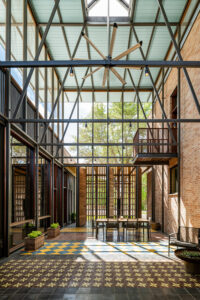
Reimagining the Courtyard House

Shaping the Culinary Experience
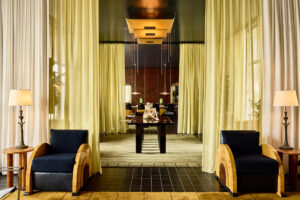
Modern Hospitality Meets Cultural Legacy

At the Intersection of Neuroscience and Design
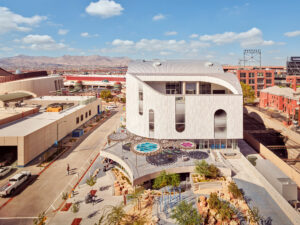
Snøhetta Transposes the Borderland

Designing for Neurodiverse Students
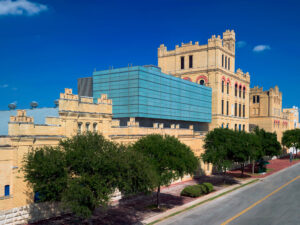

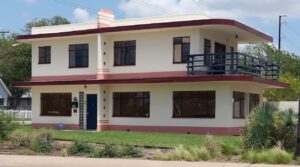
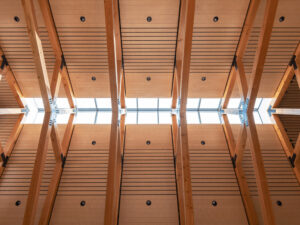

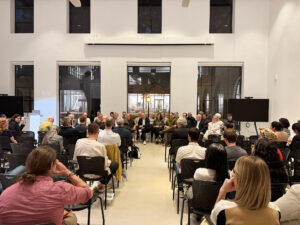
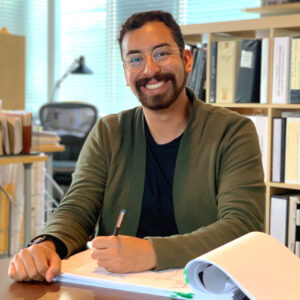
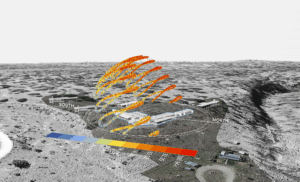

These finishes and furnishings focus on the power of color to influence mood, productivity, and overall well-being.

In Depth: Urban Domesticities Today
Edited by Florian Idenburg, Jing Liu, et al.
Lars Müller, 2025
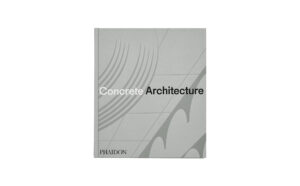
Concrete Architecture
Phaidon Editors, with Sam Lubell and Greg Goldin
Phaidon, 2024
